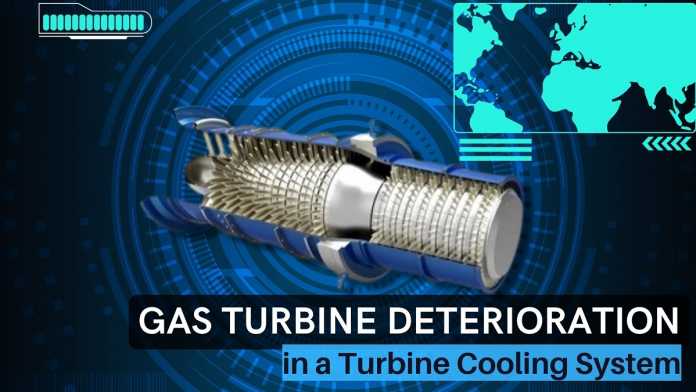The rising awareness of the environmental consequences of industrial growth has fueled efforts to reduce carbon dioxide emissions. Indeed, because energy efficiency is linked to environmental degradation, modern society is becoming increasingly concerned about it. Discussions about industrial energy frequently center on the gas turbine, a device that has existed since the days of water wheels and windmills. This highly dependable equipment converts heat into useful energy, but it is prone to failure. Many users are perplexed as to why gas turbine performance deteriorates over time. This article discusses the issue and offers solutions to it. Potential Degradation of Gas Turbine Components The life of a gas turbine is determined by various components of the equipment as well as the quality of maintenance provided.
To properly deal with gas turbine degradation, it is critical to understand all of these factors. Gas turbine components are classified as Turbine, Inlet system, Compressor, Exhaust system, Combustion area, Base, Support systems. Any of these components may experience wear and tear over the course of the equipment’s lifetime. The emphasis is particularly on the aerodynamic components, which include the compressor, pump, and turbine. The efficient interaction of these components results in gas turbine operation. Deterioration in any of these areas can have a significant impact on performance.
Contaminants
Airborne contaminants can enter the GT in two forms: hard particles and soft particles. Carbon particles, ash, dust, and sand are examples of hard particles that can cause erosion and fouling. Fouling is usually associated with soft particles. Industrial chemicals, airborne insects, unburned hydrocarbons, and soot are among them. The majority of these contaminants are smaller than 2m in size. It is important to note that fuel selection is critical because its constituents can affect performance and equipment life.
Heavy hydrocarbon fuels have a high level of radiant thermal energy and can significantly degrade hardware. They frequently contain corrosive elements like lead, potassium, and sodium. Distillates are slightly friendlier to the components, but they can still pose a problem if contaminated during transport or on site.
Corrosion and Erosion
Corrosion occurs when flow path devices lose material due to chemical contaminants in the inlet air. Lead, vanadium, and sodium are the most important elements in this regard. There is also the possibility of damage type degradation, which involves larger foreign objects striking components in the gas turbine’s flow path.
Fouling
Fouling is defined as the adherence of particles on the annulus and airfoil surfaces, which results in decreased efficiency and flow capacity. Fouling in the gas turbine reduces performance by altering the inlet angle, surface roughness, throat opening, an airfoil shape. Fouling is such a prevalent problem in gas turbines that it is responsible for approximately 80% of performance issues that occur during operation.
Effectively Combating Degradation
In the pursuit of gas turbine optimization, engineers have devised a variety of solutions to the problems discussed above. The most important of these are proper maintenance practices. One of the best remedies is to keep the control system in good working order. Engineers can keep fuel scheduling under control with a dependable control system, avoiding unnecessary temperature gradients. Other essential maintenance procedures include compressor cleaning and Inlet Filter System inspection. Along with these fundamental interventions, the following approaches are recommended for controlling the gas turbine degradation curve:
- Use of clean steam/water and fuels
- Gas turbine degradation is being closely monitored.
- The inlet filtration system should be appropriate for the site conditions.
- Use of dependable maintenance/operational procedures
- Immediate implementation of necessary corrective actions
- Use the best-coated compressor surfaces.
Turbine Inlet Air Cooling
High ambient temperatures, like the other factors mentioned above, can significantly reduce turbine performance. Yes, additional generators can be used to meet increased power demand, but this is a more expensive solution than turbine inlet air cooling (TIAC). TIAC increases the efficiency of existing gas turbines by up to 30%. Consistent cooling capacity not only promotes optimal power output but also extends the life of gas turbines.
Summary
Any form of degradation is serious for equipment as critical as a gas turbine. While the turbine, like any other engineering device, is prone to deterioration, there are steps to minimize or even halt the process. Any owner who wants his machine to be available at all times must understand the factors that influence its performance. Although the manufacturer may provide maintenance recommendations, only proper operator training, regular inspection, and rigorous system analysis will ensure peak performance. The turbine control system’s safety and security are improved with the assistance of a turbine control system. GE Turbine control systems parts like IS200TBCIH1B, IS220PDIOH1A, and IS200HSLAH2A are some examples.
Also Read: Everything you should be aware of about credit cards







